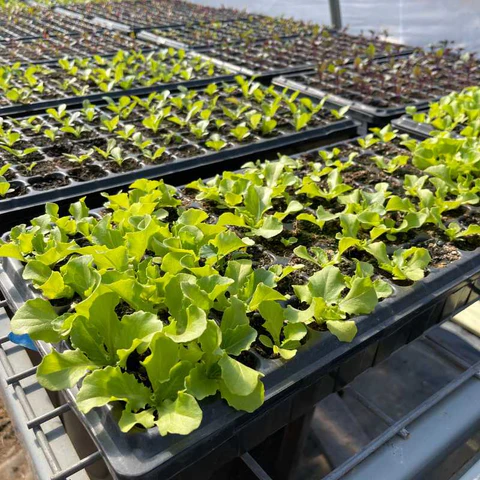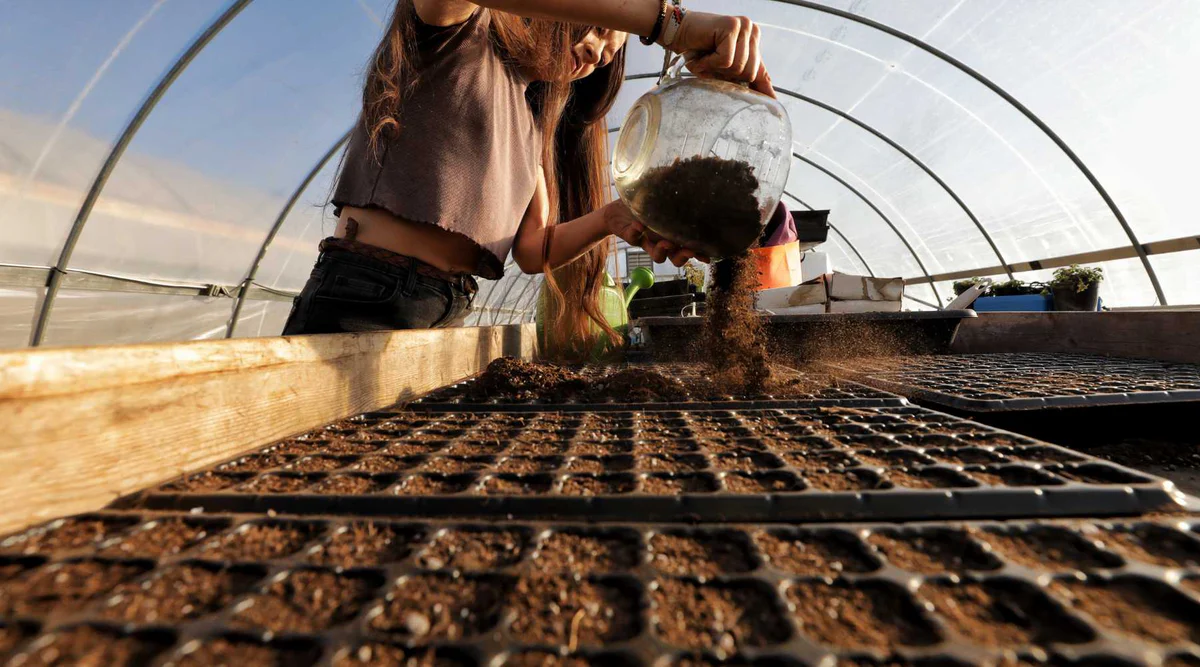Seed Planting Trays in Kenya

The improvement in agriculture favors the production of viable and disease-free plants with plastic planting trays. Plastic Seedling trays promote 100 percent seedling germination and maturity due to proper water handling ability.
Aqua Hub’s Planting Trays for Sale
Aqua Hub is a planting trays supplier with a variety of seedling propagation trays available in different cell numbers.
Our trays are KES 150 each.
Seedling Planting Trays
Planting trays are artificial ways to maintain a noble environment for young plants to prosper. In a broader perspective, trays are relatively ideal to promote a merely non-destructive environment for growth.
What makes Trays Reliable?
Planting trays have cells or holes of varying numbers and sizes to hold the soil. It is on the holes where individual seeds are planted.
The plastic nature is sustainable as it can last under harsh climatic conditions. In addition to their non-corrosive nature, planting trays are UV-treated in nature and thus resistant to harsh radiation.
On the bottom of planting trays are holes to enhance drainage and aeration.
Types of Planting Trays
Seedling trays are available in various types as per the cells including 28,50, 66, 72, 160, 200, 204, and 288.
Trays with few holes have bigger cells or hole sizes and are suitable for fruit, tree, or single-planted seedlings.
On the other hand, planting trays with higher cell numbers is ideal for tiny seedlings such as vegetable seedlings.
How to Plant Seedlings in Trays

Propagation of seeds can be done using soil or special growing media such as coco peat or peat moss.
Cocopeat is the best one to use for seedling propagation as it promotes water and nutrient retention.
It is also affordable and readily available in the market for your seedling planting needs.
Proper Seed Planting Procedures
- Choose the best medium to sow seedlings.
- Place cocopeat in trays and fill it with your hands. Avoid compressing the cocopeat in while filling the trays. Make sure to fill in the trays
- Sow the seeds on the trays. You can plant a single seed or two for other crops such as vegetable seedlings.
- The depth of seeds should be 3 inches deep.
- Water the seedlings immediately using a hand jerry can until moist enough.
- Cover the seeds and place the trays in a protected area such as shade net houses to prevent pests and harsh weather conditions.
Planting Trays Storage Environment: Where to Place Your Trays
In most cases, seedling trays are kept in greenhouses for a warm and protected environment. Any environment needs proper aeration thus the need for proper ventilation to avoid fungal diseases.
A sufficient water supply is also necessary to promote faster germination and growth. Irrigation systems need to be effective in meeting water needs and avoiding excessive irrigation.
Misters are the best methods to irrigate seedlings in greenhouses and net houses as they provide sufficient automated irrigation.
Common Seedlings to Raise on Trays
Seedling trays are commonly applicable in greenhouses and shade houses.
- Tomato
- Onion
- Capsicum
- Kale, Spinach, Cabbage
- Maize
- Fruit seedlings, such as citrus, strawberries, and melons.
Advantages of Seed Trays Over Natural Planting Beds
- Reduced incidences of damping-off caused by overcrowding and non-treated soil
- Higher germination rate
- There is much improved root development and reduced incidences of transplanting shock.
- Crops grown from germination trays mature faster as they quickly establish once transplanted. This is so because there is a significant reduction/no root disturbance during transplanting
- Uniform harvesting as compared to those raised directly in the soil
- Ease of transportation.
Frequently Asked Questions
What is a planting tray?
Planting trays are plastic materials on which seedlings are raised, enhancing the efficiency and quality of young seeds.
How are Seedling Trays compared to Beds?
They are safer to use for seedling propagation than beds as they offer higher efficiency in germination.
What are the alternatives of seedling Trays?
You can use planting bags or traditional seedling beds but not recommended due to poor soil drainage.
How long till Seedlings mature in trays?
At least 4 weeks for seedlings to mature
How much Water should I apply to Seedlings in Trays?
3-4 irrigation times a week depending on the size of seedlings.
Where Can I Purchase trays in Kenya?
Aqua Hub Limited
